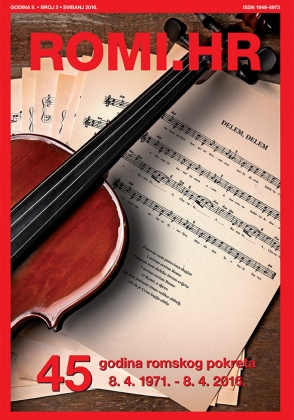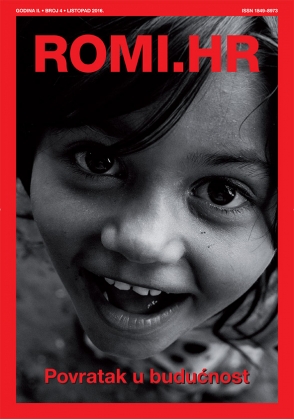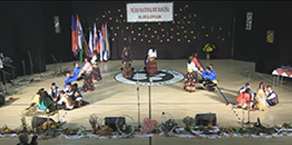Focus ROMI.HR
/January 27 is the day that the United Nations has dedicated to commemorating the Holocaust or Yom Hashoah. The Holocaust was one of the biggest tragedies in history.
The Holocaust or Yom Hashoah (held on the 27th of Nisan according to the Jewish calendar) as Jews call this tragedy and despite the passing of years, its traces still linger on us. The XX century is marked by continuous wars and merciless genocides. Among them, the most dreadful on humanity is the Second World War. French philosopher Paul Ricœur noted, "The past is not past". But we can make the future better by learning from the mistakes of the past.
According to the 1951 Israeli Law on Holocaust Remembrance, the Righteous Among the Nations honorary title was established and awarded to non-Jews who risked their lives to save Jews during the Holocaust. The name of the person who has been awarded this honor is engraved on the Honor Plate of the "Garden of the Righteous" located in the territory of the "Yad Va-Shem" museum in Jerusalem and awarded with a medal:
"Whoever saves one life, it is considered as if he saved an entire world," emphasizing the value of human life and the superiority of sacrifice and humanism above all else.
The Holocaust is defined as the state-sponsored mass killing of six million Jews as "inferior to and a threat to the German race" by the “racially superior” Hitler's regime who came to power in January 1933 and its collaborators.
In concentration camps, six million Jews and eleven million people from other groups were killed, including millions of Slavs. Victims included also Roma, the disabled, prisoners of war, and individuals of various ethnic, religious, and sexual orientations and others. The Nazis aimed to implement the “Lebensraum" plan to enslave and take the lands of Slavs. There was also a special “Zigeunerlager” in Auschwitz, and all the Roma were killed on August 2nd, 1944. The genocide of the Roma is also commemorated under the name Porajmos.
However, Hitler's primary and "ultimate goal" was the "Final Solution" to exterminate Jews, resulting in the death of millions of Europe's Jewish population. “We were hated, the first to suffer, the first to perish. I blamed myself. What did I do to deserve it?” reflected Maja Hrabowska, a Holocaust survivor. And this confirms the brutal plan of Hitler.
Until 1948, genocide was not legally defined as a concept, and there was no legal basis for mass killings to be prosecuted in a specific way. It was after the establishment of the United Nations (UN) that recognizing the mass killings by the Nazis became a pressing issue. In the aftermath of the Nuremberg Trials, the United Nations General Assembly ratified the "Convention on the Prevention and Punishment of the Crime of Genocide" in 1948. On November 1, 2005, the UN General Assembly, with Resolution No. 60/7, marked January 27 as the International Holocaust Remembrance Day.
While one of the primary reasons for observing this day is to remember and honor the victims. Another crucial purpose is to learn from history and prevent such tragedies in the future. However, as the years pass and living witnesses become scarce, achieving this becomes more challenging. Despite having ample materials such as reports, images, audio and video recordings, and memoirs, sometimes people do not even take the recent past seriously, they fail to learn from this tragedy at a time when wars are raging. We can consider the survey conducted by Germany's "Frankfurter Allgemeine Zeitung" newspaper as an example. One-fourth of the surveyed Dutch citizens believe that the Holocaust is fabricated or exaggerated. However, it should be the duty of all of us to preserve the memory of this genocide. Especially in a period where far-right populism is on the rise, particularly in Europe, and attitudes of stigmatizing ethnic and religious minorities and fostering hostility are increasing, special attention must be given to conducting commemorative events appropriately.
According to the data of the United States Holocaust Memorial Museum: Approximately 2.7 million Jews were murdered at killing centers. About 2 million Jews were murdered in mass shooting operations and related massacres. Between 800,000 and 1,000,000 Jews were murdered in ghettos, labor camps, and concentration camps. At least 250,000 Jews were murdered in other acts of violence outside of camps and ghettos.
In 1941, Germany launched the Barbarossa Plan, against the Soviet Union which was the largest military operation in history. To the German armies mobile killing units "Einsatzgruppen" ("task forces") were attached. Their task was to organize and coordinate one of the largest massacres in history. Although some of the Jewish population in the USSR managed to take refuge in the country's depths, nearly three million Jews ended up under German occupation.
For a long time, the killings, deportations, and tortures that occurred in the territories of the Soviet Union were kept behind an iron curtain. Surviving victims and witnesses were forced into silence because, as Soviet citizens, they could only be victims of the "Great Patriotic War" as communists. According to the anti-Semitic Stalin, Jewish suffering from nazism was not a narrative to talk about.
The "Einsatzgruppen" carried out the largest mass shooting operation near Kyiv, in the Babi Yar area, killing more than 33,000 Jews in just two days. The Jewish writer from USSR Vassily Grossman, entered the Treblinka camp with the Red Army and referred to it as "hell". Grossman helped compile the "Black Book", a book about German crimes against Jews from USSR, which was banned in the Soviet Union. Unlike Jews from Western Europe, Jews from Eastern Europe were deprived of freedom of expression after World War II.
The main task of the "Einsatzgruppen" was to eliminate Jews. In some areas, especially in Lithuania and Western Ukraine, local anti-semitic groups assisted in the killing of Jews, many times even carrying out the acts themselves.
On January 27, 79 years ago, the Red Army of the Soviet Union liberated Auschwitz-Birkenau, the largest and one of the most ruthless concentration camps of the Nazi regime located in Poland. The scene encountered by the Soviet army at the camp was not, as commonly known, lively and jubilant. This was because the SS officers, before abandoning the camp, had destroyed much evidence by burning it and had forced nearly 60,000 Jews into freezing cold, marching them westward to their deaths. Thus, the Soviet army encountered around 7,000 half-dead Jews abandoned to die in the remains of Auschwitz. It is important to remember that the Nazis' sole target was not only Jews. Red Army soldiers and other POWs, civilians, and other groups like the Roma were also killed in the same manner.
Today, remembering the victims of the Holocaust, it is crucial to recall that the Holocaust did not happen suddenly and was based on the propaganda promoted by the Nazi regime and the widespread antisemitism in society. Because this cruelty was neither spontaneous nor accidental. It was a death machine carefully designed in detail and function. Launching the Holocaust machine required years of labor and the support of the public and intellectuals. To exterminate the Jews, it was necessary to have the support of many, but also the silence of the majority. Those who participated in the functioning of this mechanism underwent a long process of deformation. Their hatred towards the people to be exterminated had been shaping. It must be understood that those involved in this system did not see Jews as humans but accepted them only as subhuman flawed creatures, bloodsuckers—precisely as depicted in the caricatures of popular antisemitism. If the state turns a man into a mosquito, who will feel sorry for him?
Attacks, violence, and discrimination against various ethnic, national, and religious groups persist as serious problems today. Raising awareness about the Holocaust, one of the greatest atrocities in human history, and understanding the consequences of uncontrolled hatred and collective silence is also important, especially in terms of preventing current human rights violations, massacres, and hate crimes. In this context, states should invest in education and public information in order to strengthen awareness of this issue in society and try to create an education system aimed at combating antisemitism and other forms of discrimination. In addition, states must enact laws to prevent discrimination under international human rights law and take steps to effectively implement the laws. Everyone has the duty to prevent the recurrence of the Holocaust and similar catastrophes and to say "Never again!"
 Back to Focus
Back to Focus

.jpg)











